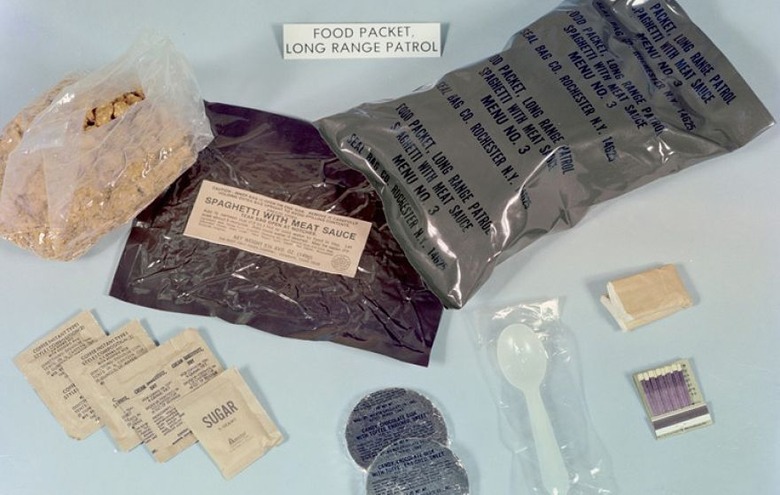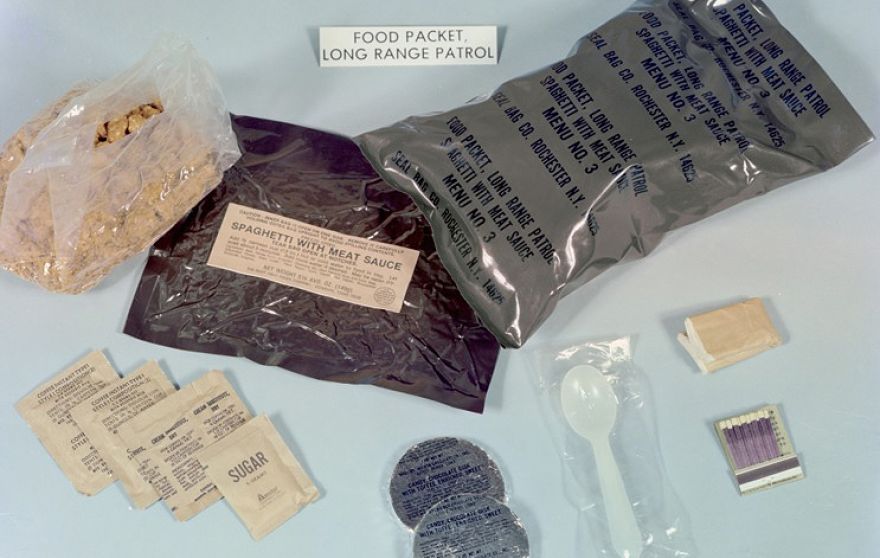K-Rations Meet Fear Factor: Online Groups Sample, Review MREs From WWII To Present Day
The latest foodie trend come not from the kitchen, but from the battlefields dating back to World War II, as YouTubers collect, sample and review the packaged military meals known more for shelf life than flavor profile.
Known as K-Rations and Meals Ready to Eat (MREs), the military surplus dinners have become hot collector's items, selling on eBay for anywhere from $5 to more than $100, depending on their vintage. The market includes enthusiasts who record themselves breaking open the dinners and eating them on video.
"Oh man, those smell awful," Steve1989 said in a video he posted where he reviews a tin of unopened Canadian Army rations from World War II. "Ugh, they smell rancid," he added as he opened up a foil wrapper containing a dozen 71-year-old biscuits.
People like Steve1989 are part of a growing online community of ration reviewers, trading, tasting and reviewing rations, according to Atlas Obscura.
"Why?" he asks later, anticipating the obvious question. "Why not? This is what we do, I guess. I feel bad for any of the guys that had to eat this back then. I can't imagine then being much better [than] now."
While freeze-dried and vaccuum-sealed meals have become a trend in the prepper community, the most sought-after consumables for the ration-reviewing crowd are military-grade. Snagging a combat-approved MRE is part of the thrill of the hunt for these enthusiasts.
"You eat your first 8-year-old, or even older, MRE and realize the history behind them," Kinton Connelly, who runs MREinfo.com, a forum for the collector community, told Foxnews.com. "When you open that can it's a feeling of wonder and curiosity. Rations even have their own unique smell."
Connelly started the website in 2003 after discovering that there wasn't much information available on rations.
"I started to look into MRE and rations around Y2K," He said. "I had always been fascinated by them, but I soon found out there wasn't a whole lot of information out there. It was scattered bits here and there."
In addition to posting YouTube videos, many of the collectors visit Connelly's site and forum as it has become the go-to place to swap meals and share advice since he launched it.
"The response was positive," Connelly said of when the site was started. "People from all over the world started signing up which enabled people here to trade U.S. rations for ones from other countries."
Popular among American collectors are Italian army rations, which come with airplane-style miniature bottles of liquor. Also popular in the U.S. are French and British army rations.
The condition of the food in the MREs varies. Even in sealed packages made for war, time and extreme temperature can cause it to spoil.
"There are some people who can take it to extremes," Connelly said, referring to enthusiasts who sample the older rations. "You can tell when something has gone bad when you open it. But many of these MREs can last at least 12-15 years if stored right."
"It can happen, but you don't hear of too many people getting sick."
Spoiled food aside, part of the enthusiasm for the collectors lies in opening up the rations to take a look inside.
"They open it because they are curious," Connelly said.
Perry Chiaramonte is a reporter for FoxNews.com. Follow him on Twitter at @perrych
Related:
- Gordon Ramsay ruins diner's proposal at Las Vegas restaurant
- 10 insanely awesome incredible edible egg hacks
- K-Rations meet Fear Factor: Online groups sample, review MREs from WWII to present day
- Pamela Anderson hits back at burger joint for using her name on meaty menu item
- Budweiser wants to call itself 'America' this summer
This article was originally published by Perry Chiaramonte on May 5, 2016


